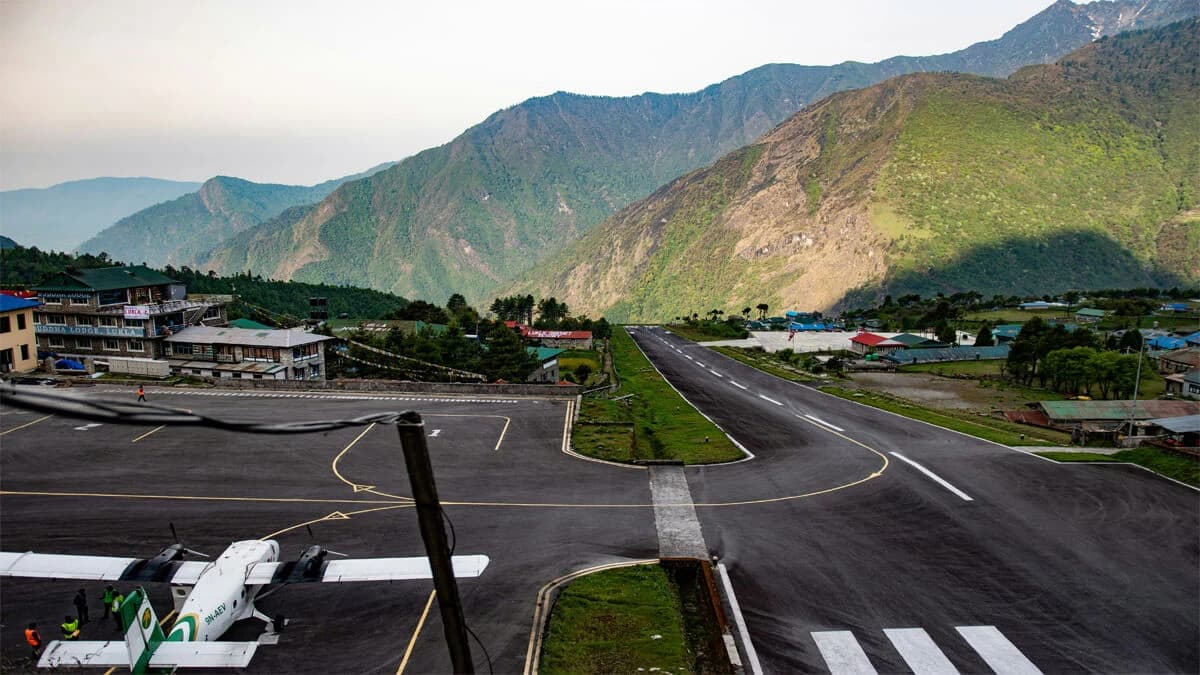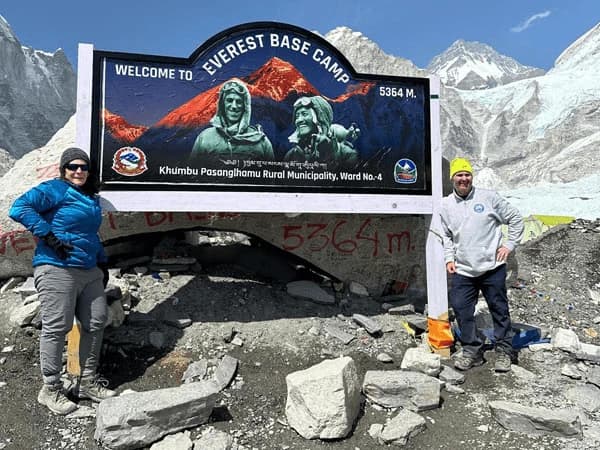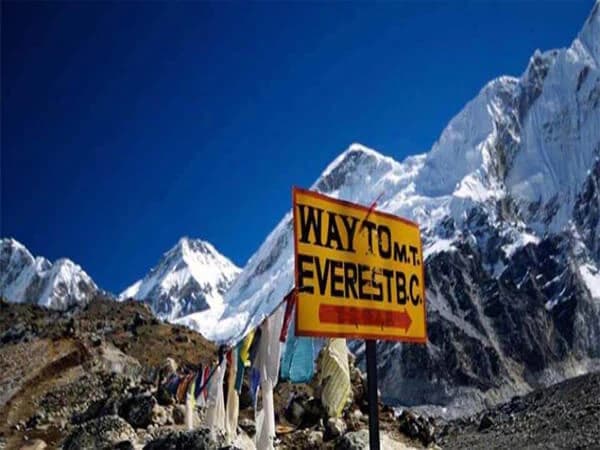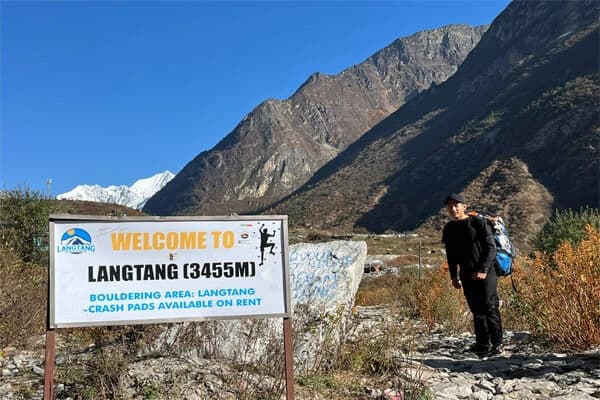A wise way to get to Lukla is to balance comfort, money, and time. The quickest and most picturesque route is the 30-minute flight from Kathmandu or Ramechhap to Lukla, but weather delays and more expensive tickets are frequent. A more affordable and dependable overland option is the jeep route to Phaplu or Salleri, which takes eight to ten hours by car plus two to three days of hiking to Lukla. Although it is a slower trip, it is ideal for cultural immersion and gradual acclimatization. Both routes take you to the entrance of the Everest Base Camp expedition, whether you opt for the swift airplane or the reliable jeep road.
Reaching Lukla the Smart Way: Flight Facts and Jeep Route Options
The first exciting step in any Everest journey is reaching Lukla. At 2,860 meters, Lukla is the primary entry point to the Everest Base Camp, Everest Three high passes trek, and other climbs in the Khumbu region. The majority of trekkers start their journey with a Lukla flight, which is a quick yet picturesque excursion that takes you minutes deep into the Himalayas. However, passengers are now searching for more intelligent and dependable ways to get to this starting point because of erratic mountain weather and airline delays.
A Flight to Lukla can challenge your patience during the busiest season, but it also offers stunning aerial views of snow-capped peaks and spectacular valleys. Those looking for flexibility and adventure are increasingly choosing alternatives like driving a portion of the journey and continuing overland.
Knowing the options, scheduling, and logistics might be the difference between a stress-free trip and a successful one. In this blog we will go over all you need to know about getting to Lukla smartly. This includes crucial flight information, overland jeep routes, and useful advice, so you can confidently start your amazing journey to Everest.
Lukla The Gateway to Everest Region
Lukla Airport Nepal almost always comes up when discussing climbing to Everest Base Camp. At 2,860 meters (9,383 feet) above sea level, this little mountain village serves as the actual beginning point for the majority of climbs into the Everest region. Officially known as Tenzing-Hillary Airport, it is one of the most well-known and exciting airports in the world. It is perched on a short ridge between steep Himalayan hills. It provides a thrilling experience for trekkers and a challenge for pilots.
A Small Town with a Big Purpose
Despite its tiny size, Lukla plays a huge part in the trekking community. This town is the center of everything, from local guides and helicopters to trekking supplies and porters. Trekkers abruptly find themselves surrounded by fluttering prayer flags, grinning Sherpas, and the clean Himalayan air after taking a Kathmandu to Lukla flight a stark contrast to the busy chaos of Kathmandu.
The flight signifies a distinct change from the bustle of the city to the serenity of the mountain. Trekkers frequently claim that they genuinely believe their Himalayan experience has begun as soon as they land at Tenzing-Hillary Airport.
Kathmandu to Lukla Flight: A Scenic Yet Unpredictable Journey
The trip from Kathmandu to Lukla is one of the most beautiful in the world, despite its little duration of 25 to 30 minutes. The tiny planes, which typically hold 15 to 18 people, glide over deep river basins, snow-covered peaks, and rolling hills that appear close enough to touch.
But the weather also affects this flight. Strong winds, abrupt fog, and erratic clouds are common in the Himalayan region, which can impair vision and make the Lukla flight status highly uncertain. For this reason, the majority of flights take place early in the morning, when the breezes are milder and the skies are clearer.
Understanding Lukla Flight Status and Delays
Monitoring their Lukla flight status is crucial for trekkers, particularly during trekking seasons. Even the most organized travelers may encounter a Lukla flight delay, but local trekking companies and airlines typically offer frequent information. Changing mountain weather, especially during the monsoon season (June to August) and winter months (December to February), frequently causes these delays.
Trekkers frequently spend additional hours or even days in Kathmandu or Ramechhap waiting for the weather to improve when delays occur. Some decide to convert to helicopter services, which are more adaptable in inclement weather but more expensive.
Fortunately, delays are managed patiently and supportively. The majority of regional trekking companies, such as Nepal Trekking Routes, help customers with accommodation reservations, rebooking, and even ground transportation options when necessary.
Inside Lukla Airport Nepal – The Tenzing-Hillary Airport Experience
Named after Sir Edmund Hillary and Tenzing Norgay Sherpa the first climbers to reach Mount Everest’s summit, Tenzing-Hillary Airport honors their pioneering spirit. The runway has a steep 12% gradient and is just 527 meters (1,729 feet) long. It gives takeoffs and landings an exhilarating sensation as it slopes uphill toward a mountain wall and downward toward a deep valley.
Although it might sound daunting, the pilots that fly here are among the best in Nepal. They receive specialized training in mountain flying, guaranteeing that each Kathmandu to Lukla flight satisfies strict safety requirements. For trekkers, landing here serves as a reminder of the amazing landscape they have entered as well as an exciting high point.
Beyond the Runway – The Soul of Lukla
After landing, the village of Lukla greets you with warm lodges, mountain cafés, and friendly residents. Here, trekkers frequently stop to tour neighboring monasteries, drink a hot cup of tea, or acclimate to the altitude. Prayer wheels, chortens, and the soft beat of mountain life are just a few examples of how deeply ingrained Sherpa culture is.
The benefits of standing at Lukla Airport Nepal are unparalleled, despite the difficulties of Lukla flight delay and erratic weather. It is more than just an airport; it is the boundary between the magical and the modern worlds. Every step you take after this takes you farther into the heart of the Himalayas.
Flying to Lukla: The Classic Route
The most popular and exciting method to begin an Luxury Everest Base Camp Trek is still to fly to Lukla. The trip offers breathtaking views of snow-capped peaks, deep valleys, and terraced landscapes before landing at the renowned Tenzing-Hillary Airport, making it one of the most picturesque short flights in the world. But knowing the Lukla flight cost, schedules, weather, and safety records will help you plan your trip wisely.
Understanding Lukla Flight Cost
The Lukla flight cost varies according to the airline, season, and departure location. As of 2025, one-way tickets for foreign trekkers from Ramechhap to Lukla cost between USD 170 and USD 200 per person, with somewhat lower prices for Nepali nationals. Due to increased demand and convenience, flights from Kathmandu, when available, might cost between USD 220 and USD 250.
During the busiest trekking seasons, which are spring (March to May) and autumn (September to November), prices typically increase because to the high demand for flights.
The best option is to purchase your tickets from a reputable local tour operate company like Nepal Trekking Routes, which can manage reservations for flights as well as rescheduling in the event of delays. We frequently receive real-time flight status updates and priority access to confirmed seats.
Lukla Flight Weather Conditions
The weather is the most important factor affecting flights to Lukla. At 2,860 meters above sea level, the airport is encircled by tall peaks that frequently result in erratic Lukla flight weather conditions. Because the skies are usually clear early in the day, morning flights are more dependable.
However, by midmorning, there may be delays or cancellations due to clouds, fog, or strong winds. October through November and March through May are the best time to fly to Lukla without delays because of the clear skies and moderate winds.
Due to severe rain and poor visibility, planes are often delayed during the monsoon season (June–August), occasionally for several days. Because snow and frost can alter runway conditions, winter (December–February) presents additional difficulties. Your itinerary should always include one or two buffer days to account for any weather-related delays.
Lukla Flight Schedule
The main hub for the Lukla flight schedule is Ramechhap Airport (Manthali), which is around a four to five-hour drive from Kathmandu. In order to reduce traffic during the peak trekking seasons, flights from Kathmandu are either temporarily redirected or restricted to Ramechhap.
Each flight takes between 25 to 30 minutes, and they usually begin between 6:00 and 10:00 in the morning. Due to changing weather patterns, afternoon flights are uncommon.
Since you must check in early (about 5:00 AM), it is best to depart Kathmandu the night before your journey to Ramechhap. Nepal Trekking Routes guarantees that passengers arrive at the airport on schedule by assisting with the road transfer.
Alternatives Helicopter Charter, which offer flexibility and breathtaking aerial views of the Himalayas, are also available for individuals with busy schedules or luxury Trekking packages.
Lukla Flight Cancellation and Delays
Lukla flight cancellation is a frequent problem that trekkers should be aware of. Pilots can only operate under Visual Flight Rules (VFR), which require clear sight for both takeoff and landing, due to the airport's tiny runway and mountainous surroundings. Flight delays or cancellations can result from even mild fog or moderate winds.
Passengers are often rebooked on the next available flight when this occurs, however during peak travel times, this may require a one- or two-day wait. Having a flexible trekking itinerary and making reservations with our company guarantees effective time management. If bad weather keeps you grounded, they can help you change to a helicopter service or modify your lodging arrangements.
Lukla Flight Safety Record
The Lukla flight safety record has greatly improved over the last ten years, despite the airport's reputation as one of the most difficult in the world. The route is now safer than ever thanks to modern aircraft, stringent pilot training, and improved weather monitoring systems.
In Lukla, only very skilled pilots are permitted to operate, and if safety requirements are not satisfied, flights are promptly canceled. Airlines that prioritize safety, such as Tara Air, Summit Air, and Sita Air, have tightened their operational requirements. The fact that Nepal's aviation authorities maintain stringent regulations to guarantee safe and dependable mountain flights should reassure travelers.
Traveling by plane to Lukla is a journey in and of itself, full of excitement, wonder, and expectation. You can better plan and travel with confidence if you are aware of the Lukla flight cost, schedules, weather, and safety precautions. You may have a stress-free trip to the Everest gateway by making reservations in advance and being adaptable.
Ramechhap Route Explained
Why Flights Operate from Ramechhap Instead of Kathmandu
You may probably come across the Ramechhap to Lukla flight option if you intend to trek to Everest Base Camp. In recent years, flights to Lukla have been moved from Tribhuvan International Airport in Kathmandu to Manthali Airport in Ramechhap, which is roughly 132 kilometers east of Kathmandu. This modification primarily ensures safer and more timely flights to the highlands and helps manage air traffic congestion in Kathmandu. Ramechhap's closeness enables earlier morning departures and better time for flight operations because Tenzing-Hillary Airport in Lukla has very short landing windows due to strong winds and unpredictable weather.
How to Reach Ramechhap from Kathmandu
A brief but crucial portion of your trip is getting to Ramechhap. Depending on traffic and road conditions, the trip takes four to six hours. In order to get to the airport in time for their flight to Lukla, the majority of travelers depart Kathmandu either midnight or early in the morning. Before you even start your journey, you get a taste of Nepal's scenery as the route meanders through picturesque hills, rivers, and small towns. For this journey, we can set up cozy private shuttles or group cars so you can get to your early flight on time.
Facilities at Ramechhap (Manthali) Airport
Unlike the airport in Kathmandu, Ramechhap Airport is a tiny domestic hub. Basic facilities include restrooms, check-in counters, and small tea shops that serve regional cuisine and beverages. Despite being straightforward, it works well for quick domestic flights. There are lodges and guesthouses in the area where you can stay the night before your Ramechhap to Lukla flight. Depending on the weather, most flights start early (between 6 and 9 AM), as later flights may be impacted by wind or fog in the highlands.
Pros and Challenges of the Ramechhap Route
Compared to departures from Kathmandu, the flying route from Ramechhap to Lukla offers higher flight reliability and a better possibility of avoiding weather delays. The lengthy road trip before your flight is a drawback, though, and it can be exhausting, particularly after a late-night drive. Despite this, a lot of trekkers favor this route due to its superior timing, more safety, and greater likelihood of arriving in Lukla on time.
The Jeep Route to Lukla: An Overland Adventure
The Jeep route to Lukla provides trekkers searching for Lukla flight alternatives with a distinctive and picturesque approach to go to the Everest region without the worry of erratic aircraft. You will roll through the mountains rather than soar over them, taking in the local way of life, breathtaking scenery, and a slow shift from lowlands to highlands. The Kathmandu to Lukla by road route has become in popularity among travelers who want a more grounded experience with less delays and more cultural interactions.
Starting the Road Journey: Kathmandu to Salleri or Phaplu
The drive to Lukla from Kathmandu starts with leaving the capital early in the morning. The majority of visitors go to Salleri or Phaplu, two small villages in the Solukhumbu district that serve as important entry points to the Everest region. The road meanders past forested slopes, terraced farmland, and charming mid-hill settlements.
Depending on the weather and road conditions, the Kathmandu to Salleri drive route takes eight to ten hours. It is a long but worthwhile journey that gives you a taste of real Nepalese rural life that you would not get from a quick trip. The jeep ride eventually ascends toward the higher mountains of Solukhumbu after passing through communities like Dhulikhel and Okhaldhunga.
Before beginning their journey the following day, tourists frequently spend the night in Phaplu or Salleri, taking advantage of the cozy accommodations of teahouses and mountain lodges. Both locations provide simple lodging, regional restaurants, and breathtaking views of neighboring peaks.
Phaplu to Lukla Trek: A Gradual and Rewarding Climb
The journey continues on foot with the Phaplu to Lukla trek after arriving in Phaplu, which typically takes two or three days. This part of the trip serves as a mild introduction to the paths that lead to the Everest region. You will traverse suspension bridges, stroll through rhododendron forests, and go through Sherpa communities that are full of warmth and culture.
Compared to flying directly to Lukla's 2,860 meters, the trek offers a more progressive acclimatization procedure that helps your body adjust to the rising altitude. Trekkers frequently stop at quaint teahouses along the route, which offer substantial meals and friendly service.
Walking from Phaplu to Lukla gives your Everest journey more purpose and rhythm by enabling you to establish a close connection with the locals and surroundings. It is important to fully enjoy the journey that leads there rather than only arriving at the final destination.
Why Choose the Lukla Overland Route?
For people who appreciate flexibility, culture, and a slower pace, the Lukla overland route is ideal. Trekking plans can frequently be delayed or disrupted by weather-related aircraft cancellations to Lukla, particularly in foggy or windy circumstances. You have more control over your schedule when you travel by car since it eliminates these uncertainties.
For those who want off-the-beaten-path adventures, the jeep route is also perfect. You will engage more with locals, encounter fewer tourists, and discover areas that people who fly straight to Lukla seldom see. Additionally, this road boosts regional companies along the way, boosting rural Nepal's economy.
Naturally, the road can occasionally be dusty and uneven, particularly after it has rained. However, this is a part of the experience for many, serving as a reminder that genuine Himalayan travel frequently entails a blend of difficulty and beauty.
Practical Tips for the Road Trip to Lukla
If you intend to do a road trip to Lukla, reserve your jeep through our organization beforehand. Depending on your preferences and financial situation, we can set up private or shared cars. While shared jeeps are more affordable and offer the opportunity to meet other passengers, private jeeps offer comfort, flexibility in pauses, and easier logistics.
To escape traffic departing Kathmandu, set out early in the morning. Bring water, some food, and, if necessary, medication for motion sickness. It is a good idea to stretch and take pauses during the lengthy travel.
Get plenty of rest after arriving in Phaplu or Salleri before starting your journey to Lukla. Following the traditional trekking path, you can easily proceed from Lukla toward Namche Bazaar and ultimately Everest Base Camp.
For trekkers who wish to experience more than simply a flight, the road route from Kathmandu to Lukla is a wise, beautiful, and enriching option. In addition to providing flexibility and excitement, the Jeep route to Lukla gives a true cultural experience in the heart of the Himalayas.
How to Reach Everest Base Camp Without Flying?
Although many trekkers adore the mountains, some are uncomfortable with the small planes that land at Lukla. If that is you, there is a delightfully grounded alternative: you can walk all the way to Everest Base Camp on land without taking a plane. And the adventure includes the journey.
Your first step is to take a bus or jeep out of Kathmandu and head toward the lower Everest region. The majority of visitors go to the little hill settlements of Salleri or Phaplu, which are connected by a difficult but improved mountain route. Depending on traffic and weather, the trip takes eight to ten hours. The landscape, which includes distant snow-capped peaks, forested hills, and terraced farms, keeps things fascinating even though it can get dusty at times.
The real journey starts when you get to Salleri or Phaplu. The trail winds through traditional Sherpa communities where people live at a delightfully leisurely pace. Long before you reach the well-known Everest paths, you will traverse suspension bridges, pass through pine forests, and trek alongside yaks. The majority of trekkers start their journey at Lukla, the gateway village, and it typically takes 2 to 3 days to arrive. From then, the clasic Everest Base Camp trek path takes you via Namche Bazaar, Tengboche, Dingboche, Lobuche, and Gorakshep until you reach Base Camp, which is an amazing moment.
What is the best thing about traveling overland? You avoid the unpredictability of airline delays, your budget remains favorable, and you adjust more organically. From the road to the high Himalayas, there is a certain satisfaction in earning each step.
It does add a couple extra days. Yes, there can be bumps in the road. One step, one village, one ridge line at a time, however, many find that arriving at Everest Base Camp without flying is a deeper and grounded way to confront the mountains.
Lukla flight vs jeep route comparison
Your trip begins long before you set foot on the route if you intend to trek to Everest Base Camp. Every trekker must decide whether to fly to Lukla or travel by jeep. Each has advantages and disadvantages, and the decision ultimately comes down to your comfort level, travel preferences, and financial constraints. Let us examine the comparison in more detail.
The Classic Lukla Flight: Fast but Weather-Dependent
The most common and conventional option is to fly from Kathmandu (or Ramechhap during peak season) to Lukla. After landing at Tenzing-Hillary Airport, which is renowned for its tiny runway and breathtaking mountain views, the 30-minute flight takes you directly into the Himalayas.
Time efficiency is the flight's primary benefit. Compared to the overland route, you can arrive in Lukla the same day and begin your trek right away, saving nearly two days. You get your first look of Everest, Ama Dablam, and the Khumbu Valley from these amazing airborne vistas.
The main drawback, though, is the unpredictability of the weather. Due to fog, wind, or poor visibility, Lukla flights frequently experience delays or cancellations. Hundreds of trekkers may become stuck for days amid bad weather. The expense of the flight, which typically costs between $180 and $200 per person one way and is more expensive than the road option, is another disadvantage.
To put it briefly, the Lukla flight is perfect for people who are pressed for time and want to get off quickly and scenically, but there is some risk and cost involved.
The Jeep Route: Longer but More Reliable
The other option is to take a vehicle overland from Kathmandu to Phaplu or Salleri and then trek to Lukla. People who wish to avoid flight cancellations or who want a slower, more flexible start are increasingly choosing this method.
Depending on the state of the roads, the jeep ride from Kathmandu to Phaplu takes eight to ten hours. Terraced fields, mountain communities, and picturesque countryside abound along the uneven route. It takes two to three days to walk from Phaplu to Lukla.
Before entering the congested Everest zone, this route provides an opportunity to sample less crowded paths and local culture. Because you gain altitude gradually, it is also a wonderful alternative for moderate acclimatization. For those on a tight budget, the Kathmandu to Lukla jeep cost and time is fairly affordable, costing between $25 to $30 per person.
Comfort is the drawback. The additional trekking days involve more time on the road, and the jeep trip might be challenging. Nevertheless, it is a reliable and genuine way to get to Lukla without having to worry about airline cancellations.
Which One Should You Choose?
Choose the Lukla flight if convenience and quickness are important to you. You will quickly arrive at the highlands and begin your journey. The jeep path may be preferable if you value stability, cost savings, and a more comprehensive local experience. Although it moves more slowly, bad weather will not ever leave you stuck.
To put it briefly, your decision between the Lukla flight and the jeep route will depend on whether you like a fast-paced adventure or a leisurely ride through Nepal's hills. Both routes will take you to the same enchanted location: the heart of the Everest region.
Reaching Lukla the Smart Way FAQs
How long does it take to reach Lukla by flight?
A direct flight from Kathmandu to Lukla takes around 30 minutes, while flights from Ramechhap (used in busy seasons) take about 20 minutes. It’s the fastest and most scenic option, offering incredible aerial views of the Himalayas.
Why are Lukla flights often delayed or canceled?
Lukla’s small mountain runway depends on clear visibility and stable weather. Fog, wind, or low clouds can easily cause delays or cancellations, especially during the monsoon and winter months.
How long does it take to reach Lukla by jeep?
Traveling by jeep from Kathmandu to Phaplu takes about 8–10 hours, depending on road conditions. From Phaplu, trekkers walk 2–3 days to reach Lukla.
What is the cost difference between flight and jeep travel?
A one-way Lukla flight costs around USD 180–200 per person, while a jeep ticket to Phaplu is roughly USD 25–30. The jeep route is cheaper but takes longer.
Which is the smarter choice: flight or jeep route?
If you value speed and convenience, fly to Lukla. If you prefer reliability, budget travel, and cultural immersion, the jeep route offers a slower but steadier and more authentic journey.
How to reach Lukla without flying from Kathmandu?
You can reach Lukla without flying by taking a jeep from Kathmandu to Phaplu or Salleri, then trekking for two to three days through scenic hills to Lukla.
Conclusion: Reaching Lukla the Smart Way
Ultimately, the best way to get to Lukla is to decide what best suits your travel preferences. Although there is a chance of delays and increased expenses, the aircraft provides an exciting shortcut into the mountains, saving time and offering breathtaking vistas. Conversely, the jeep approach is more affordable, slower, and allows for more cultural interactions as well as gradual acclimation. Each path has its own appeal; one is swift and daring, while the other is realistic and grounded. The objective is always the same: to start your Everest journey safely, sensibly, and with a spirit prepared for the adventure ahead, whether you like to fly above the sky or weave through Nepal's highlands.







